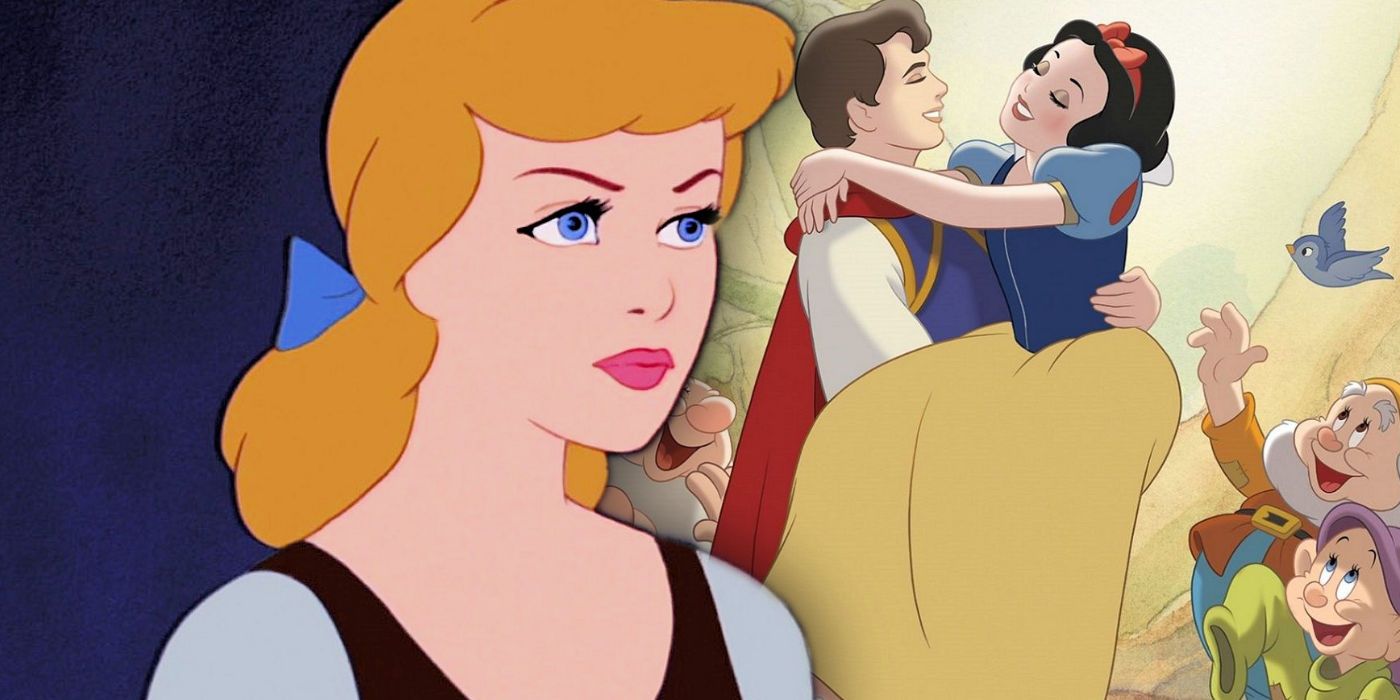Though Cinderella was only the second animated Disney princess movie, Cinderella subverts a trope that many other Disney princesses follow. Cinderella has been lambasted as anti-feminist and old fashioned, but a more nuanced reading of the classic 1950 film reveals that these labels are not necessarily accurate or fair. The trope is that a Disney princess is passive and her story revolves around a man, yet Cinderella doesn’t mention romantic love until after she meets the prince and she doesn't wait around for the prince to come save her. Yes, Cinderella did eventually need help escaping from her stepmother, but that’s not inherently a bad thing.
Unlike a lot of Disney princesses (Snow White and Rapunzel being notable exceptions), Cinderella grew up in an abusive household. Cinderella’s stepmother, Lady Tremaine, forced her to live in the attic, do every single household chore, and wait on the rest of the family. For the first half of the film, everything that Cinderella does is to please her stepmother, either hoping to gain affection or, at the very least, enough goodwill to be allowed to attend the ball because she wanted a night off. She didn’t know that attending the ball would change her life - she didn’t even know the man she danced with was the prince, and she certainly didn’t expect to fall in love. But even after falling in love, Cinderella goes back to her normal life, knowing that Lady Tremaine would never allow her to get married and move out.
The prince allows Cinderella the opportunity of a good life outside of her abusive household, yet she's the one who has to physically escape to get to him. When Cinderella discovers that the man she fell in love with was the prince - who does have the power to overrule Lady Tremaine - and that he wants to take her away, Cinderella's hopes return, but those hopes are dashed when Lady Tremaine locks her in the attic. However, it’s not the prince who barges into the house, takes the key from Lady Tremaine, and whisks Cinderella away. In fact, the prince isn’t even there. Instead, Cinderella’s enduring kindness is repaid when the animals that she has befriended hear her cries for help and retrieve the key to unlock the attic.
Some have criticized Cinderella for being weak and passive because she does not attempt to escape her abusers, but this same accusation doesn’t get applied to other characters who were in similar situations; no one says that Harry Potter is weak because he needed the Weasleys to help him escape his abusive family, rather than doing it on his own. Cinderella didn't have the privilege of being able to challenge her status while maintaining a roof over her head, so she learned how to survive. She even explains this to the dog, Bruno, who was dreaming about catching Lady Tremaine’s cat, Lucifer: “Suppose they heard you upstairs? … You don't want to lose a nice warm bed.”
Cinderella got through each day by dreaming of a better future and showing kindness to everyone around her – even when she was constantly mistreated by her stepmother and stepsisters. Though Cinderella was not without fault or tropes entirely, Cinderella was an active protagonist who had a unique personality made of compassion and resilience. Far from being just another Disney princess movie, Cinderella is the story of a young woman who escapes an abusive situation using her greatest resources – hope, kindness, and friendship.


